Stories That Shine Like Stained Glass
The Pillars of the Earth pulls us into a violent medieval world
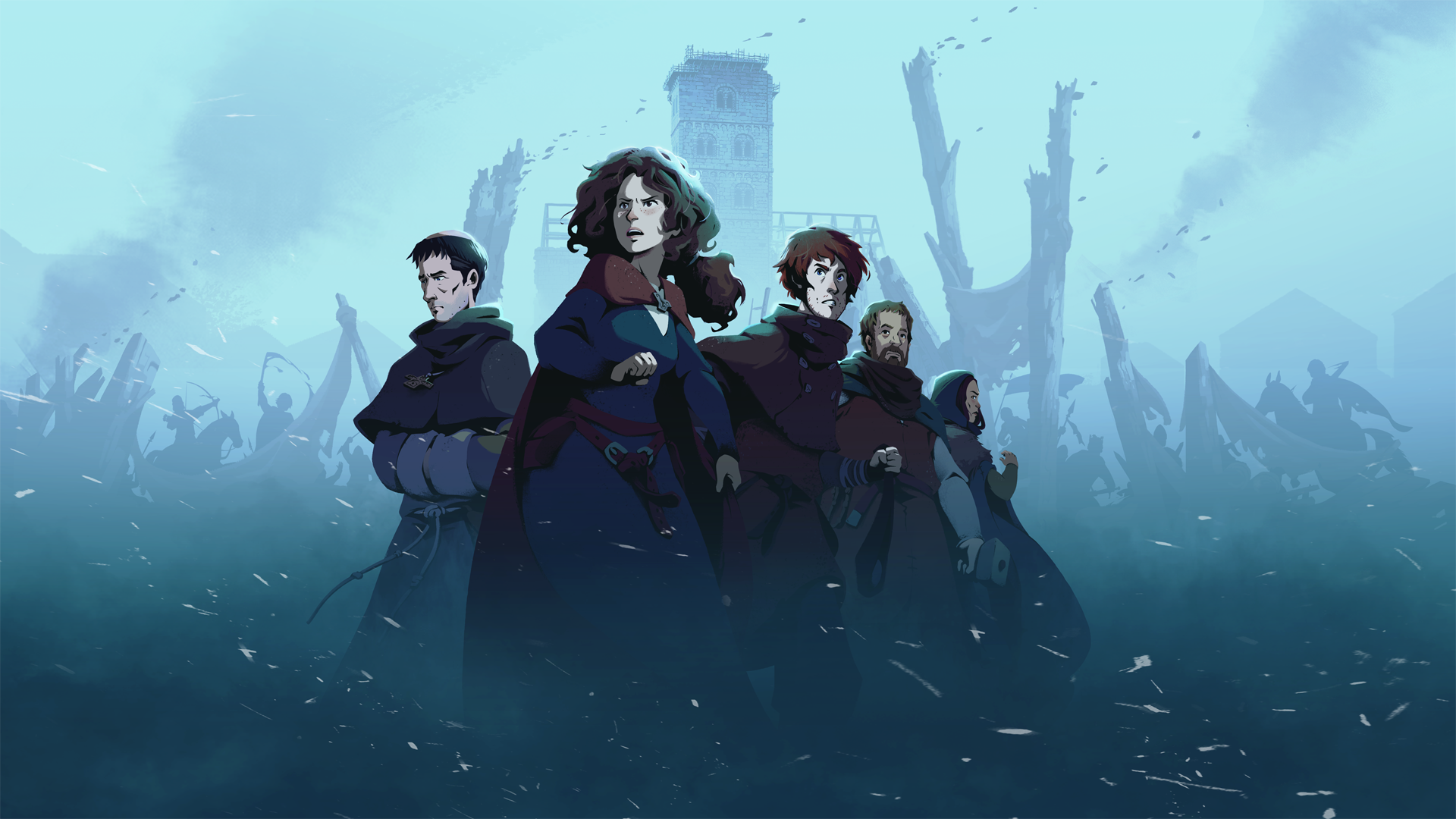
Adventure games experienced a renaissance during the 2010s. These games, with their focus on choice and narrative, introduced a new audience to the important genre. During this decade, Daedalic Entertainment took on the mammoth task of transporting the popular The Pillars of the Earth book, by Ken Follett, to the digital realm. It would be the German studio’s biggest project up to that point.
Events that encircle
The Pillars of the Earth's setting is a somber one. England did not have it easy in the 12th century. For one, a civil war broke out a couple of years after King Henry I died in 1135, which caused the fabric of communities to fray while two factions jockeyed for power. During these events, The Pillars of the Earth’s large cast need to find ways to survive.
Real-life historical events weave together with fictional elements to create the game’s story. Kingsbridge, the backdrop for many of the events, feels like an actual place, even though Follett had invented it for this tale. It all melds together so well that it’s often difficult to discern where fact ends and fiction begins.
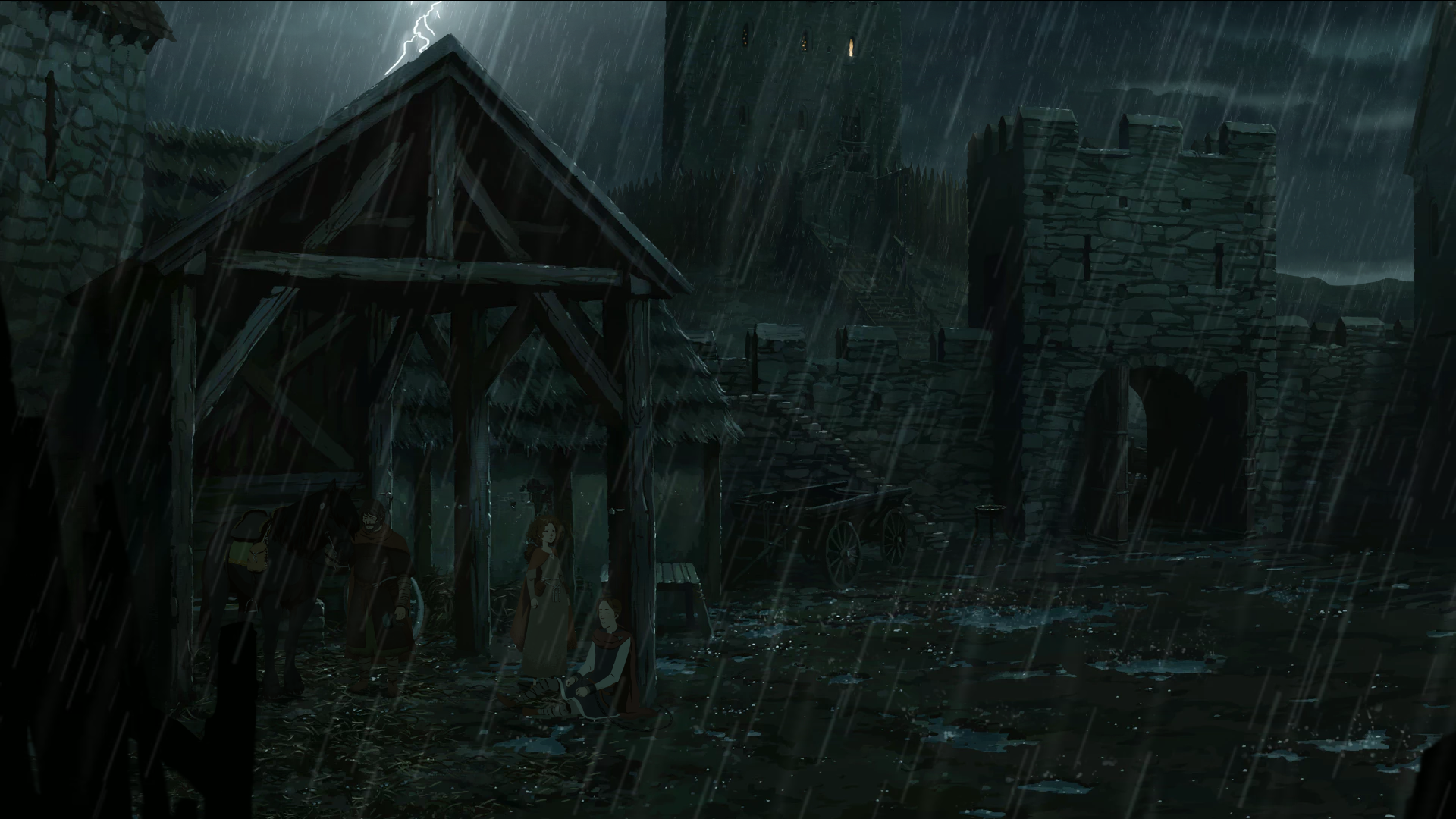
The game world is like an old DreamWorks animated movie come to life. Painterly backgrounds pay tribute to the medieval setting, too. It shows how, even though complex polygons have enchanted the video game industry, a 2-dimensional game can still display immense beauty. This gritty, non-cutesy style isn’t that common anymore.
This devotion to seriousness also overflows into the story’s tone. Life is hard in the Middle Ages, and death is always around the corner. Despite this, many don’t see other people’s humanity, which only heightens the misery. We take control of three different protagonists, each with different backgrounds, mindsets, and hopes. The writers — and Ken Follett, as a consultant — used their individual stories to complement the overall narrative.
Move the pieces
The Pillars of the Earth isn’t a typical adventure game. Instead of item puzzles, the game focuses on story choices to challenge us. Sure, we do click on objects, and interact with them like many previous adventure games, but the toughest choices are part of the dialogue. And they run on a timer too. Quick time events break up the gameplay loop, like many games of its era. It isn’t overcooked here, though.
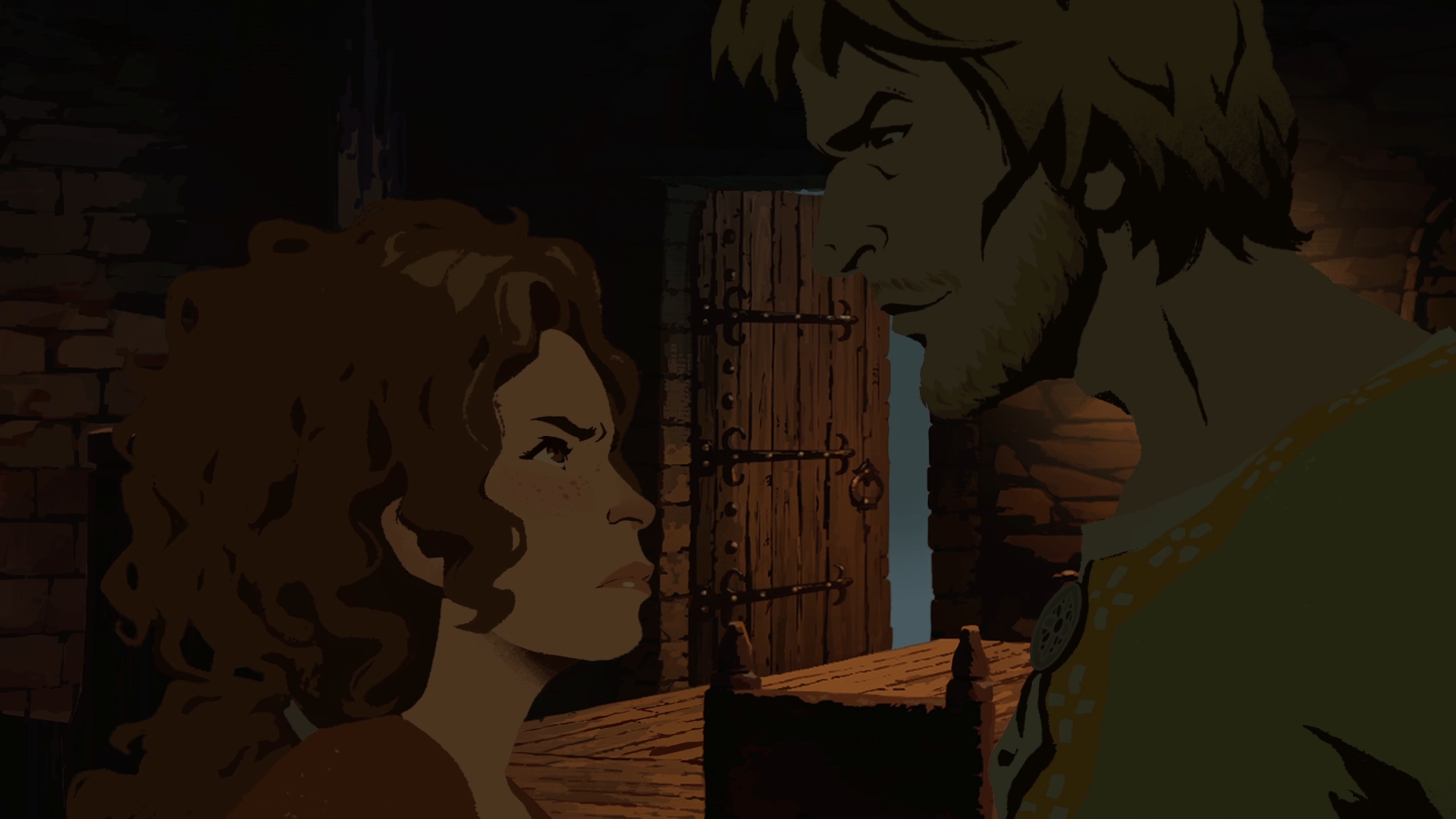
At the end of each chapter, the game shows you how your choices changed the story, much like the Telltale games. This design choice makes it feel like your choices matter. The world feels alive as well, because you often discover side quests or other conversations off the beaten path.
Not everyone will like the slow pace of The Pillars of the Earth. Characters are not in a hurry when they walk across the world. To the patient, it’s an invitation to luxuriate in the environment’s beauty. You need to relax to enjoy the game to its fullest, because all the elements come together to create an experience. Matthias Kempke, the creative lead and game writer, said in an interview:
The main story still unfolds like it does in the novel, but players can make a lot of decisions with fateful consequences. Decisions you make early on still have consequences late in the game. Mix all that with an epic orchestral score, great art from our artists, great voice actors and hard work on details to achieve historical accuracy and then you get what Ken Follett’s The Pillars of the Earth (2017/2018) is all about.
All these elements heighten the impact of the story beats. We get to know the characters at their lowest, root for them, and worry about the challenges that lurk in the shadows. It’s an experience that relies on our emotions.
Connections beyond the horizon
The release of the game was episodic. From August 2017 until March 2018, Daedalic released the story in three books. Contemporary reviews were quite positive. One criticism was the technical issues — something I did not encounter in my playthrough, which suggests that the developer had already patched these bugs in the interim.
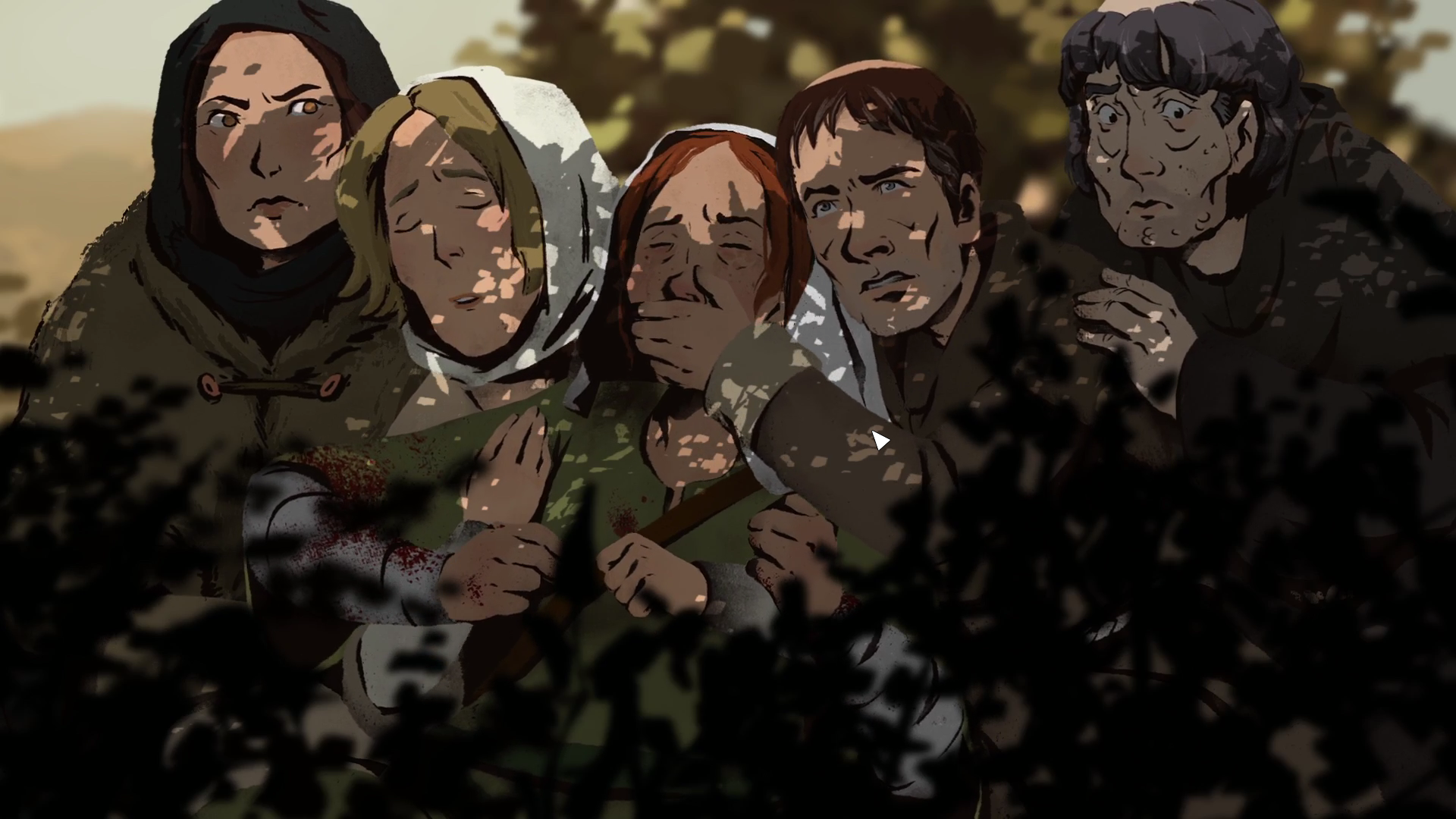
Speaking of which, Daedalic Entertainment itself witnessed many changes after the release of The Pillars of the Earth. In 2020, the book publisher Bastei Lübbe, whose connections facilitated the adaptation, sold its stake in the game developer to Nacon. After the release of The Lord of the Rings: Gollum, Daedalic Entertainment shut down its whole developing arm. Going forward, it would be a game publisher.
The Pillars of the Earth is a result of the studio’s last artistic flourishes. Over a 3-year development cycle, Daedalic Entertainment had employed all the knowledge they had accrued over a decade of developing adventure games. Sadly, its release date coincided with the adventure game renaissance’s endpoint. Book 3 of The Pillars of the Earth’s release was the same year a highly influential studio, Telltale Games, closed its doors.
In the game’s rich world, we see the hopes of the developers to bridge the significant divide between games and books. Good interactive adaptations can open up the books to a new audience, and vice versa. Daedalic Entertainment’s successful execution still shows the possibilities that are largely still unrealized to this day.
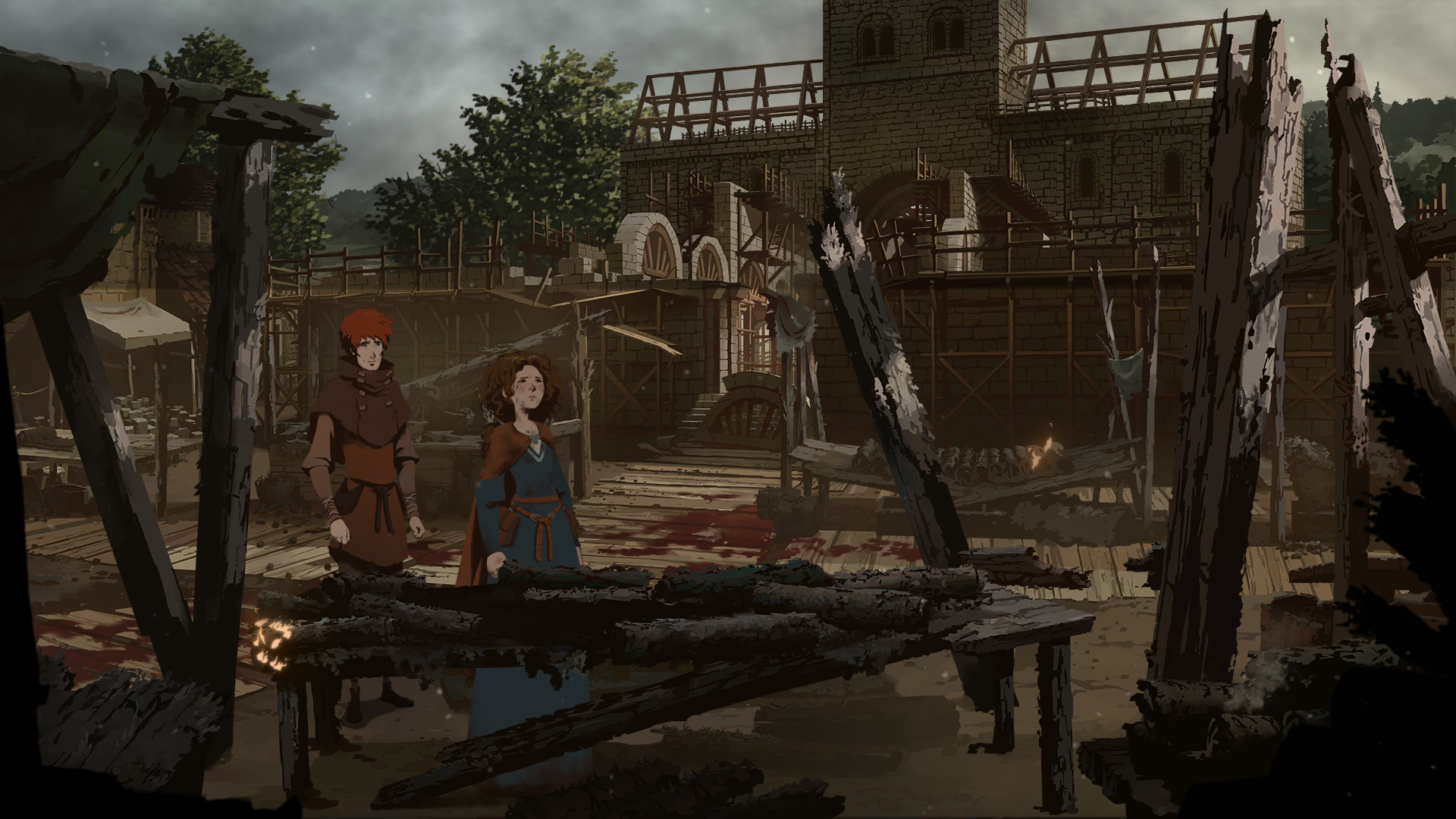
Ken Follett’s involvement helped the game stay true to his original vision, even though the original text is almost 1000 pages long. It also allowed the developers to experiment with the stories of an established fictional world. Back in 2015, Daedalic talked about this aspect:
This game will be more than just complementary media to the book and will instead retell the story in a new, interactive way.
They did indeed tell the story in a way that highlighted the strengths of the adventure game format. During a playthrough, we gain a new appreciation for the choices Aliena, Jack, and Philip have to make in the story. We think of what we would do if we found ourselves in situations that challenge our personal philosophies. Empathy reminds us that difficult choices can define ours–and others'–lives.